WORLDWIDE — The summer solstice arrives late Wednesday, or early Tuesday, depending on where you live, making both days essentially the "longest" days of the year in the Northern Hemisphere.
- The earth is actually farthest from the sun during this time of the year
- Only day of the year when Arctic Circle experiences a continuous period of daylight for 24 hours
- Sun will be directly over Tropic of Cancer, a line of latitude located at 23.5 degrees north of the equator
The solstice occurs Thursday morning at 5:07 a.m. CT, and at that moment, the North Pole and Earth’s tilted axis are pointed most toward the sun.
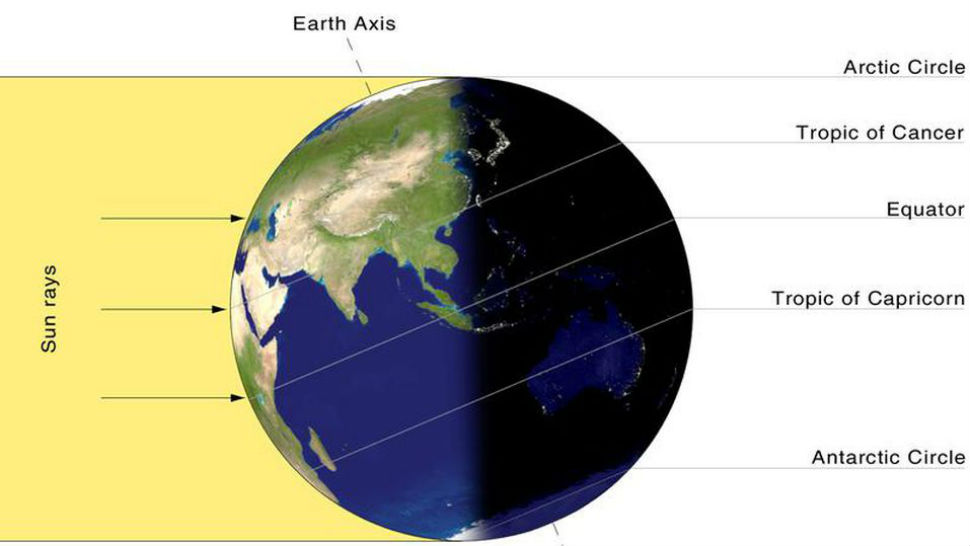 Courtesy/NASA
Courtesy/NASA
Why Solstices and Seasons?
The reason for solstices, and seasons, is because Earth’s axis of rotation is tilted about 23.5 degrees. This tilt causes each hemisphere to receive varying amounts of sunlight throughout the year as our planet orbits the sun.
The National Weather Service says the June solstice occurs when the sun’s direct rays reach their northernmost point with respect to Earth’s equator. At that moment, the sun shines directly overhead along the Tropic of Cancer, at 23.5 degrees north latitude.
The word “solstice” comes from the Latin words sol sistere, which mean “sun standing still.”
To us on Earth, the sun’s daily northward movement in the sky appears to pause before changing direction. Humans have celebrated for centuries and longer (Think Stonehenge and the ancient Mayans).
Amount of Daylight You’ll Receive
Depending on where you live, or your distance from the equator, will determine how much daylight you’ll see.
Daylight on the summer solstice ranges from less than 14 hours in the Florida Panhandle and southern Texas to more than 16 hours across the northern tier.
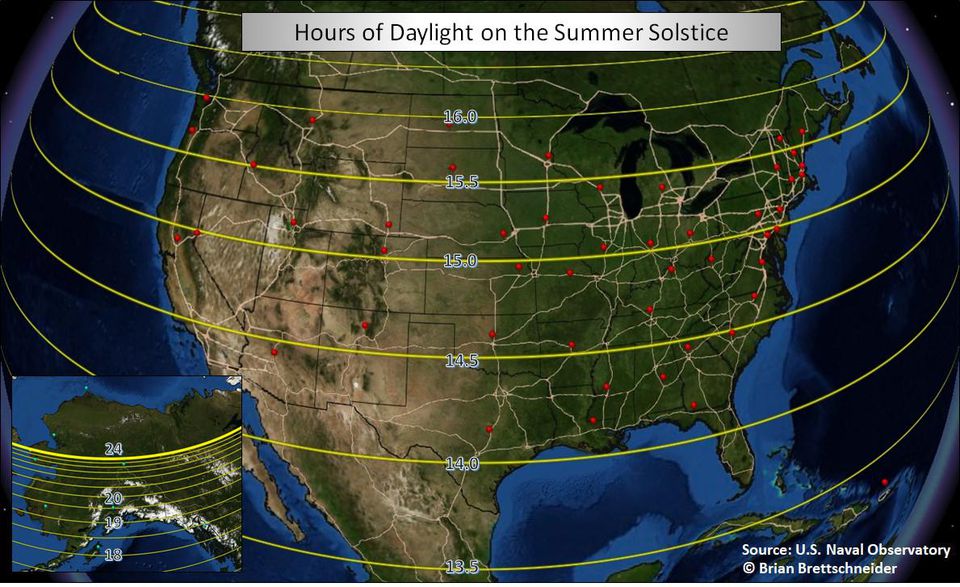
In Washington, D.C., the sun is up for 14 hours and 54 minutes on the solstice. Sounds like a long day, but it’s nothing compared to Alaska’s or northern Canada’s 18 to 24 hours.
As for the rest of the Northern Hemisphere, the map below shows that each red circle represents a 30-minute increase or decrease in daylight. Cities connected by the same line have the same number of daylight hours.
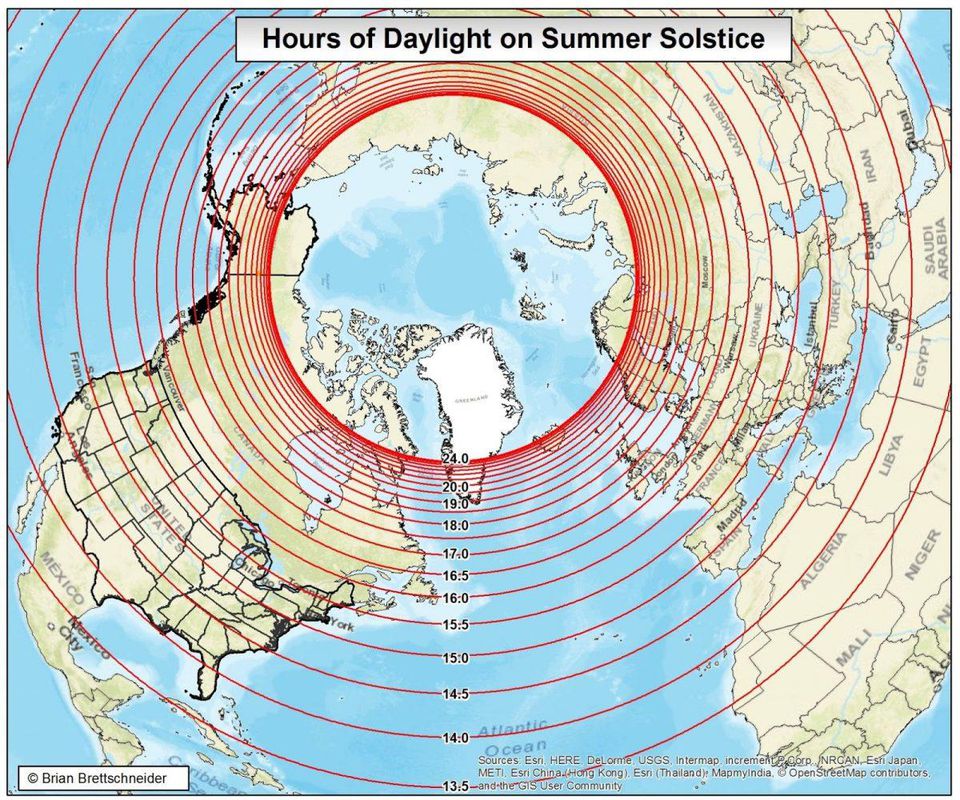
Sunrise, Sunset on the Summer Solstice
Sunrise and sunset times depend on the latitude and geographic location of your time zone.
Maps that show the time of sunrise and sunset across North America:
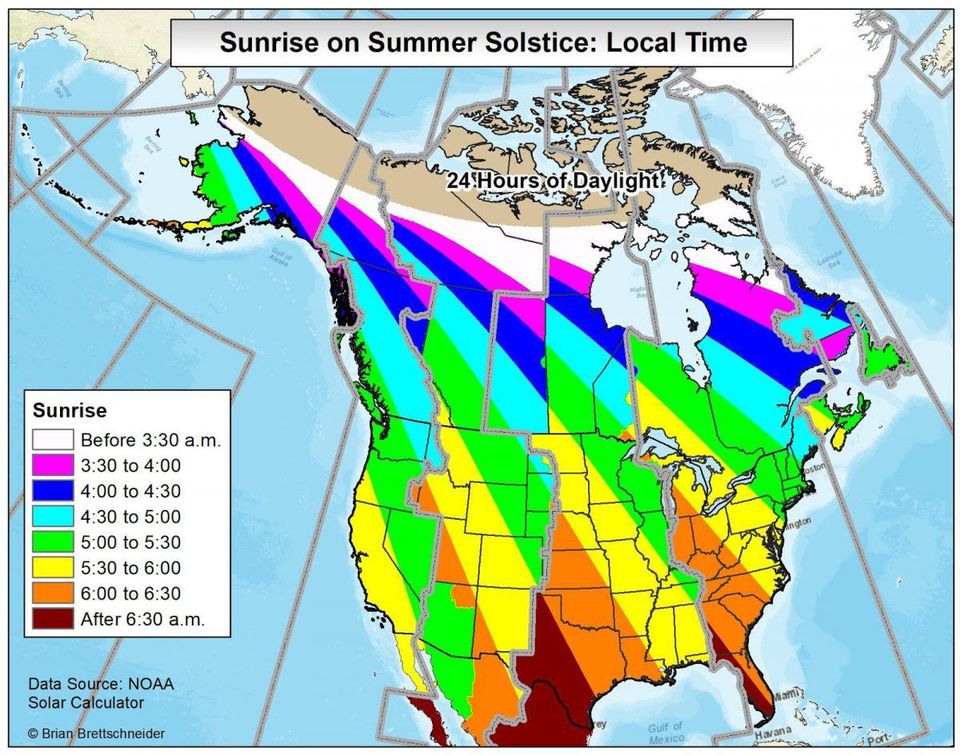
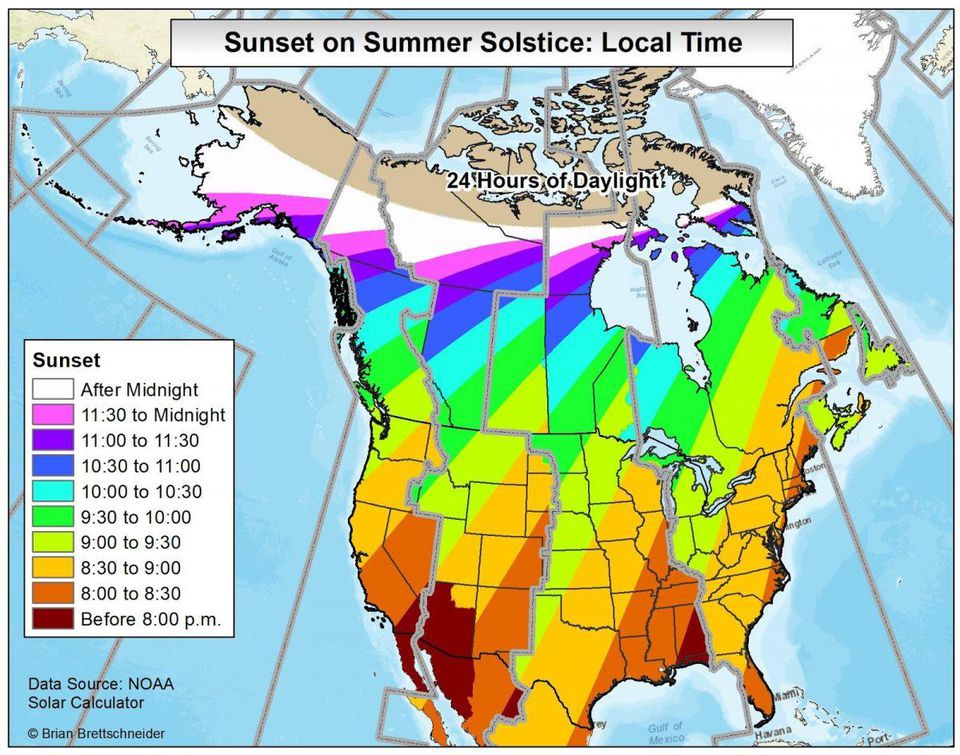
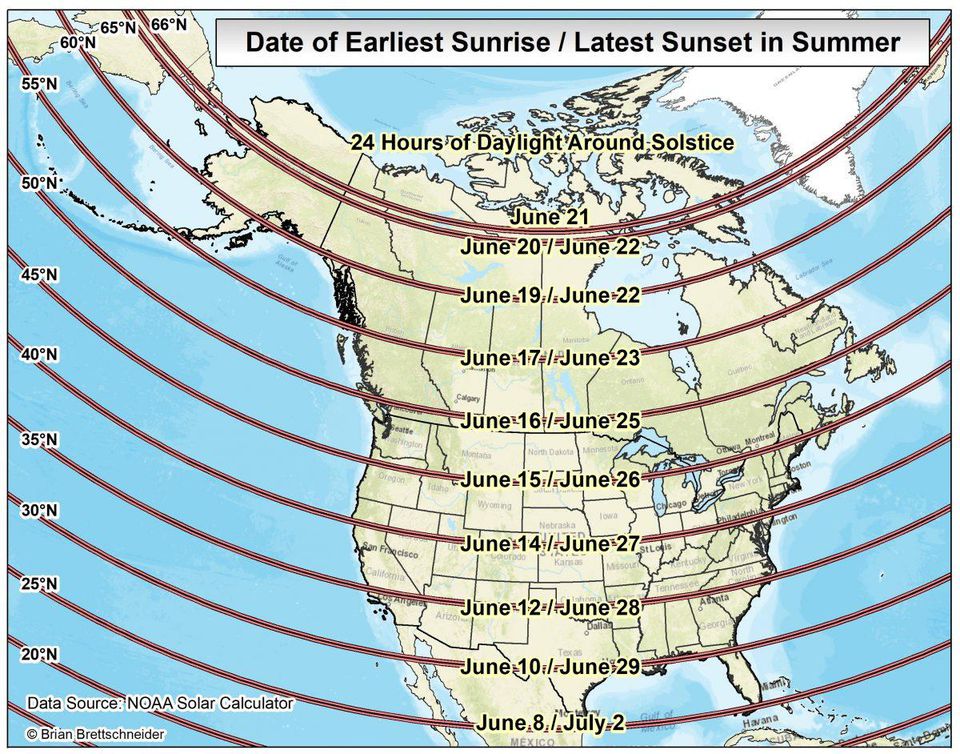
Soon after the summer solstice, the length of daylight in the Northern Hemisphere gradually grows shorter each day until the winter solstice in December, when the shortest amount of daylight occurs.
Is this the first official day of summer?
Depends on who you ask! Astronomers and scientists use the date of the June Solstice to mark the beginning of summer in the Northern Hemisphere and winter in the Southern Hemisphere.
For meteorologists, however, summer began almost three weeks ago, on June 1.
And then there's Stonehenge...
Over 5,000 years old, no one knows why Stonehenge was built, but scientists think they have an idea. The stones may have been used to mark solstices and equinoxes. During the summer solstice, the sun rises just over the structure’s Heel Stone and hits the Altar Stone dead center.
Want to know more? Head over to scijinks.gov/solstice.



